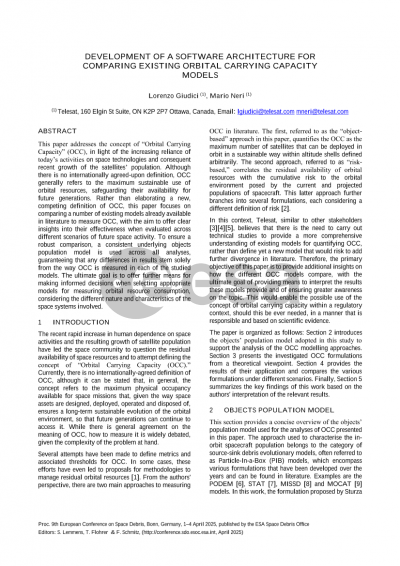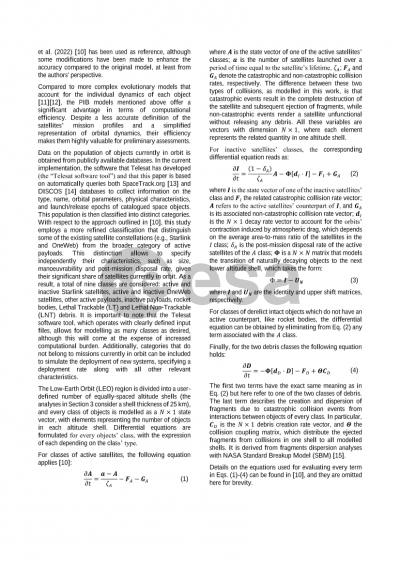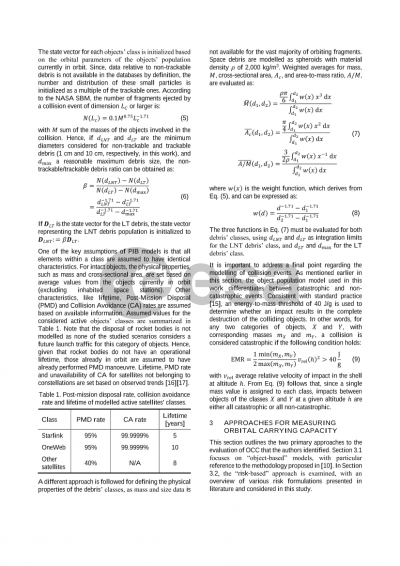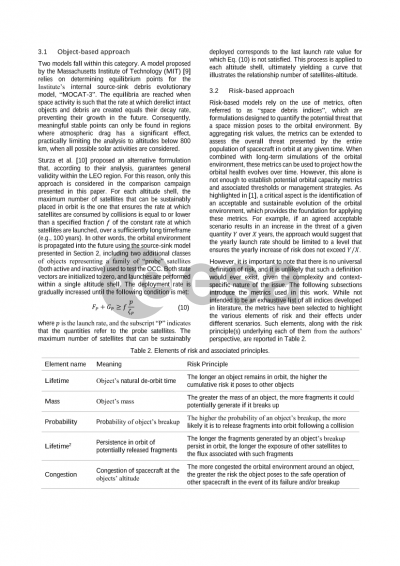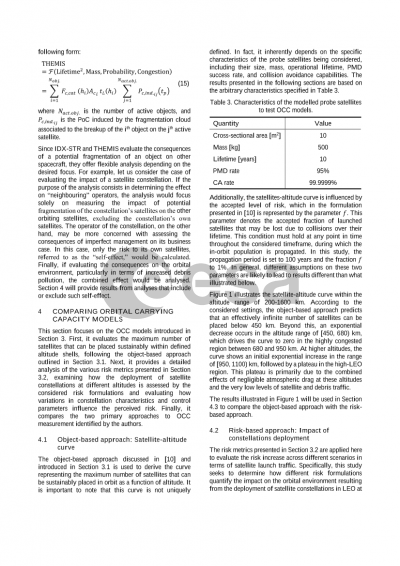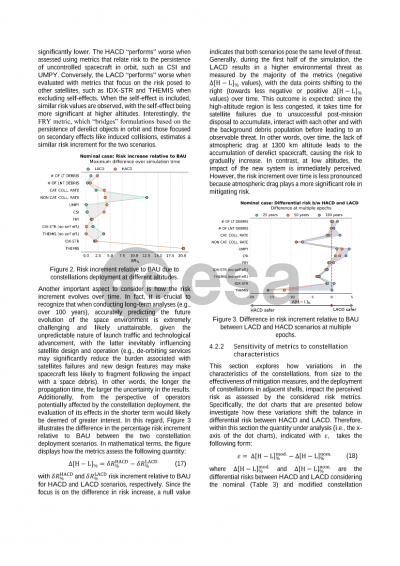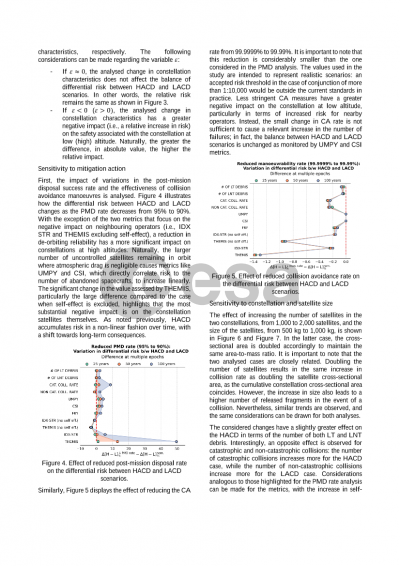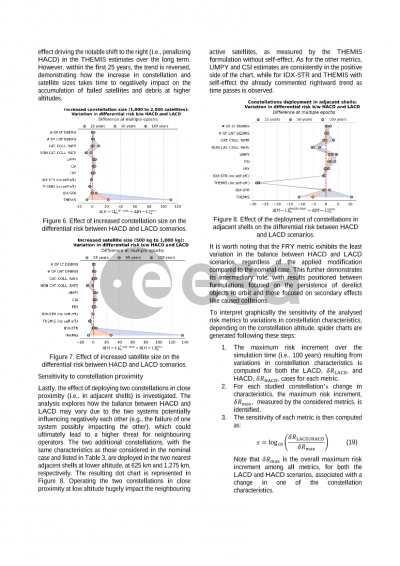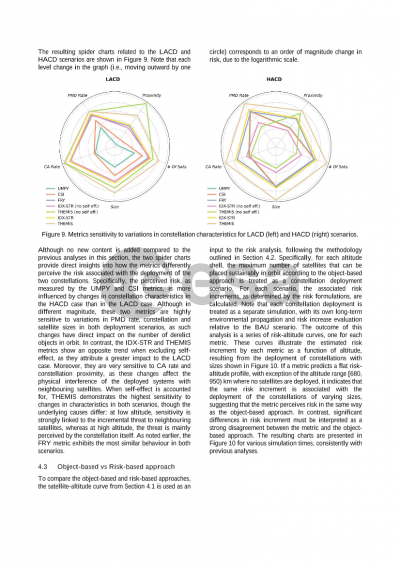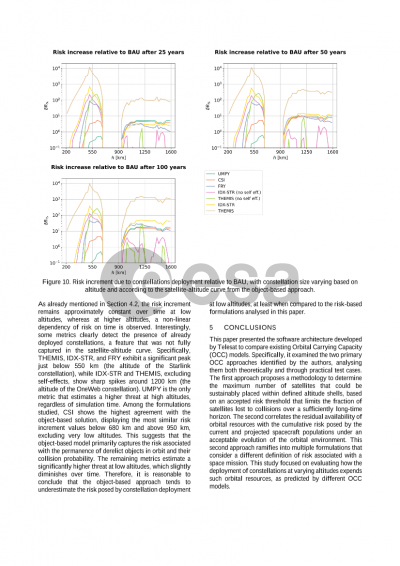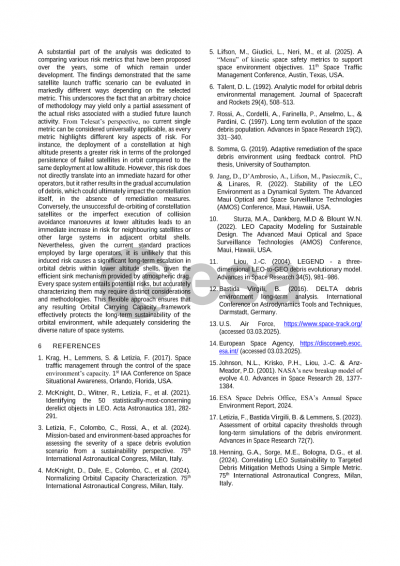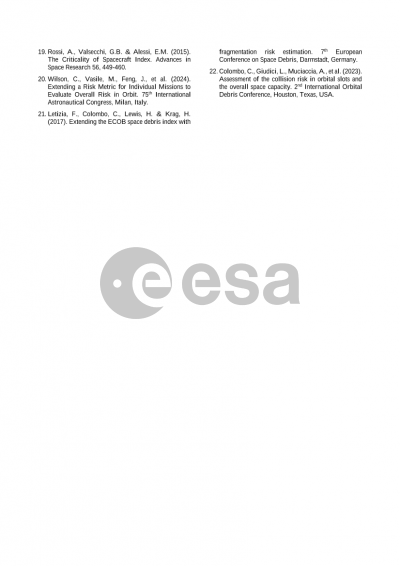Document details

Abstract
The recent rapid increase in human dependence on space activities and the resulting growth of satellite population have led the space community to question the residual availability of space resources and to attempt defining the concept of “Orbital Carrying Capacity.” Currently, there is no internationally-agreed definition of Orbital Carrying Capacity, although it can be stated that, in general, it refers to the maximum physical occupancy available for space missions that, given the way space assets are designed, deployed, operated and disposed of, ensures a long-term sustainable evolution of the orbital environment, so that future generations can continue to access it. While there is general agreement on the meaning of Orbital Carrying Capacity, how to measure it is widely debated, given the complexity of the problem at hand.
In literature, there are two major approaches to attempt to measure Orbital Carrying Capacity: the first, referred to as “objects-based,” quantifies the Orbital Carrying Capacity as the maximum number of satellites that can be sustainably placed in arbitrarily-defined altitude shells. The second, referred to as “risk-based,” correlates the residual availability of orbital resources with the cumulative risk that the current and projected populations of spacecraft pose to the orbital environment. This latter approach further branches into several formulations that consider different definitions of risk. While the advantage of “objects-based” methods is to provide an outcome quantity that is easy to understand and manage (e.g., the maximum number of satellites that can be deployed in an orbital slot), such simplicity comes at the expense of a potential oversimplification of the problem. On the contrary, more complex “risk-based” methods allow for a more complete analysis of the problem, although they require a prior definition of an acceptable evolution of the space environment as well as a detailed post-processing of simulation results, in order to link the time-varying cumulative risk posed by orbiting spacecraft to the management of the residual orbital resources.
In this context, given the need to converge towards an agreed methodology for the evaluation of Orbital Carrying Capacity, this work aims to perform a rigorous comparison between the different formulations existing in literature. This will provide further means to interpret results provided by existing models and will ensure greater awareness on the topic, in order to enable the possible use of the concept of Orbital Carrying Capacity in a manner that is responsible and based on scientific evidence.
To allow for a better comparison between the various models studied, an identical underlying objects population model will be employed for all of them. The comparison campaign will rely mainly on the following methodology: first, an “objects-based” method will be used to estimate the maximum number of satellites that can fit in-orbit under initial conditions differing in terms of satellites post-mission disposal rates, lifetime and physical characteristics, and altitude profile of the satellites’ deployment, for example. The evolution of the orbital environment associated with the computed maximum launch rate condition will define the acceptable scenario for the “objects-based” method and the input for any analyzed “risk-based” approach. Second, this acceptable scenario will be tested against different risk metrics, meaning that the aggregate risk posed by the projected spacecraft population will be computed using the available formulations in the literature. Finally, the different levels of consumption of orbital resources estimated by the “risk-based” models will be assessed by comparing initial and final values of the aggregate risk, as well as by monitoring its trend over time. Any such trend will then be checked against those of relevant variables for the object-based model (e.g., the estimated number of collisions), in order to understand how the two different approaches to model Orbital Carrying Capacity compare.
Preview
